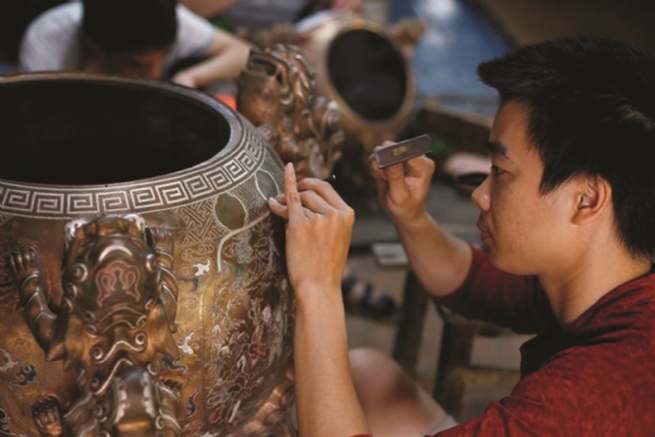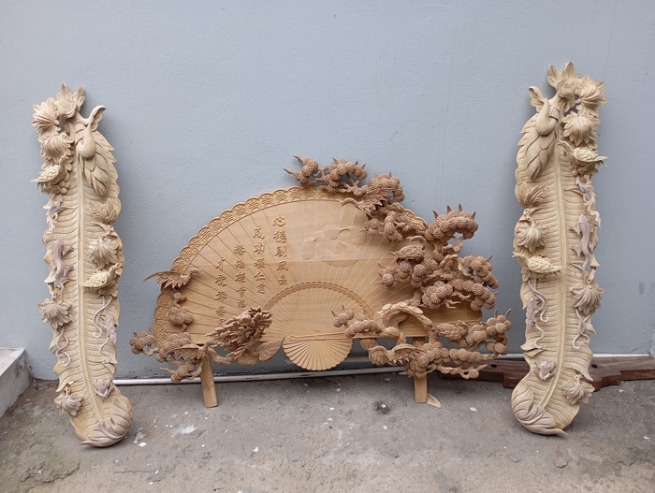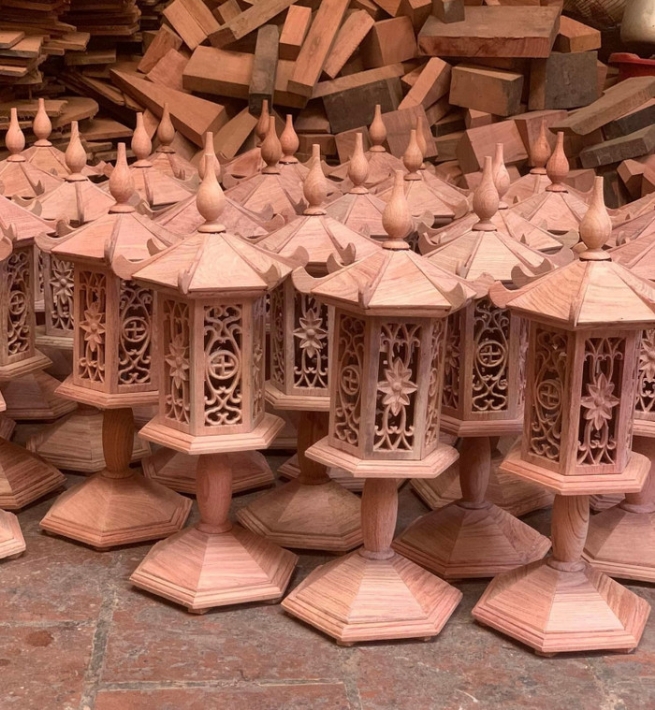Son Dong village in Son Dong commune, Hanoi, is Vietnam’s largest center for producing wood-carved statues and Buddhist ritual objects. The village once held a national record for the quantity and quality of its wooden statues and the number of skilled artisans. More than a traditional craft village, Son Dong has become a cultural symbol, an appealing destination for domestic and international visitors, and a distinctive part of the capital’s cultural heritage.

Son Dong village - Vietnam’s largest center for producing wood-carved statues and Buddhist ritual objects
In 2007, the Vietnam Record Book recognized Son Dong as “The Largest Village Producing Carved Statues and Buddhist Ritual Objects in Vietnam.” Today, Son Dong’s fine art and handicraft products not only serve the country’s spiritual and cultural needs but are also exported to international markets such as Japan, Korea, and Russia.
To ensure sustainable development and help the village’s craftsmanship integrate into global markets, both local authorities and artisans are seeking to have Son Dong admitted as a member of the World Crafts Council, which would open up greater export opportunities for its products.
Currently, Son Dong’s sculpture and fine arts industry includes nearly 700 households and 10 companies engaged in handicraft production, creating jobs for thousands of workers. The village’s products account for around 50% of Vietnam’s market share in lacquered and gilded statues and ritual items, helping to preserve the nation’s spiritual culture while also being exported to countries such as Russia, Ukraine, France, the United States, Thailand, Laos, and Cambodia. The average annual income for local workers is approximately VND140 million per person.

The village’s fine art and handicraft products not only meet the country’s cultural and spiritual needs but are also exported to international markets
Following Government Decree 54/2018/ND-CP dated April 12, 2018, on rural craft development, and under the guidance of the Hanoi People’s Committee and the Hanoi Department of Agriculture and Environment, Son Dong Commune has completed all necessary criteria to apply for recognition by the World Crafts Council as a member of the World Network of Creative Craft Cities.
To promote the village’s image, Son Dong commune has launched its official website (https://langnghesondong.info), featuring photos and videos introducing the history and development of the craft village. The commune has also set up a 40-square-meter classroom for theoretical training and a 50-square-meter practice room fully equipped with tools. Currently, more than 20 young local students are receiving training in theory and calligraphy.
The commune has also collected and displayed certificates honoring artisans, artifacts from various periods of the village’s development, photo albums of traditional products, and portraits of master craftsmen. At the Creative Design Center, hundreds of drawings and carved patterns are preserved and displayed, creating a vibrant traditional atmosphere. The center also maintains a collection of sample materials for production and showcases valuable documents on traditional lacquer, carving, architecture, and decorative motifs.
According to Hoang Thi Hoa, Head of the Rural Development Department under the Hanoi Department of Agriculture and Environment, craft villages are one of Hanoi’s five pillars of cultural industry development. Promoting global integration for these villages will open new directions for growth and export. With their unique craftsmanship, Son Dong’s artisans remain dedicated to passing down their heritage so that the village’s cultural essence continues to thrive in modern life.
Nguyen Tri Dung, 57, an artisan from Son Dong Craft Village, said that the hardest part of making Buddha statues and ritual objects is giving each sculpture a soul, so it appears both spiritual and lifelike.

He explained that every artisan must work with sincerity and use all the refined skills accumulated over years of practice. “There are products in my workshop,” he said, “that I cannot let less experienced workers make. Without enough talent and experience, the result would be lifeless, lacking the spiritual depth that defines our craft. Such products would diminish the distinctive value and harm the long-standing reputation that generations of artisans in the village have built.”
According to Dung, each artisan must deeply understand the origin and spiritual meaning of every piece. For Buddha statues, it is important to know the nature and sacred qualities of each deity. The time to complete a sculpture varies depending on its complexity, size, and the customer’s request, especially when the client requires it to be entirely handmade.
Pham Gia Loc, Chairman of the Son Dong Commune People’s Committee, said that to complete all necessary criteria, the commune has requested continued attention and guidance from the Hanoi People’s Committee and the Hanoi Department of Agriculture and Environment so that Son Dong Craft Village may soon be recognized as a member of the World Network of Creative Craft Cities in 2025. He emphasized that this recognition would help Son Dong’s products reach global markets, contributing to local socio-economic development, creating more jobs, and increasing income for artisans.
By Minh Ngoc, Vietnam Business Forum
| This special section is supported by Hanoi Coordination Office of the New Rural Development Program |